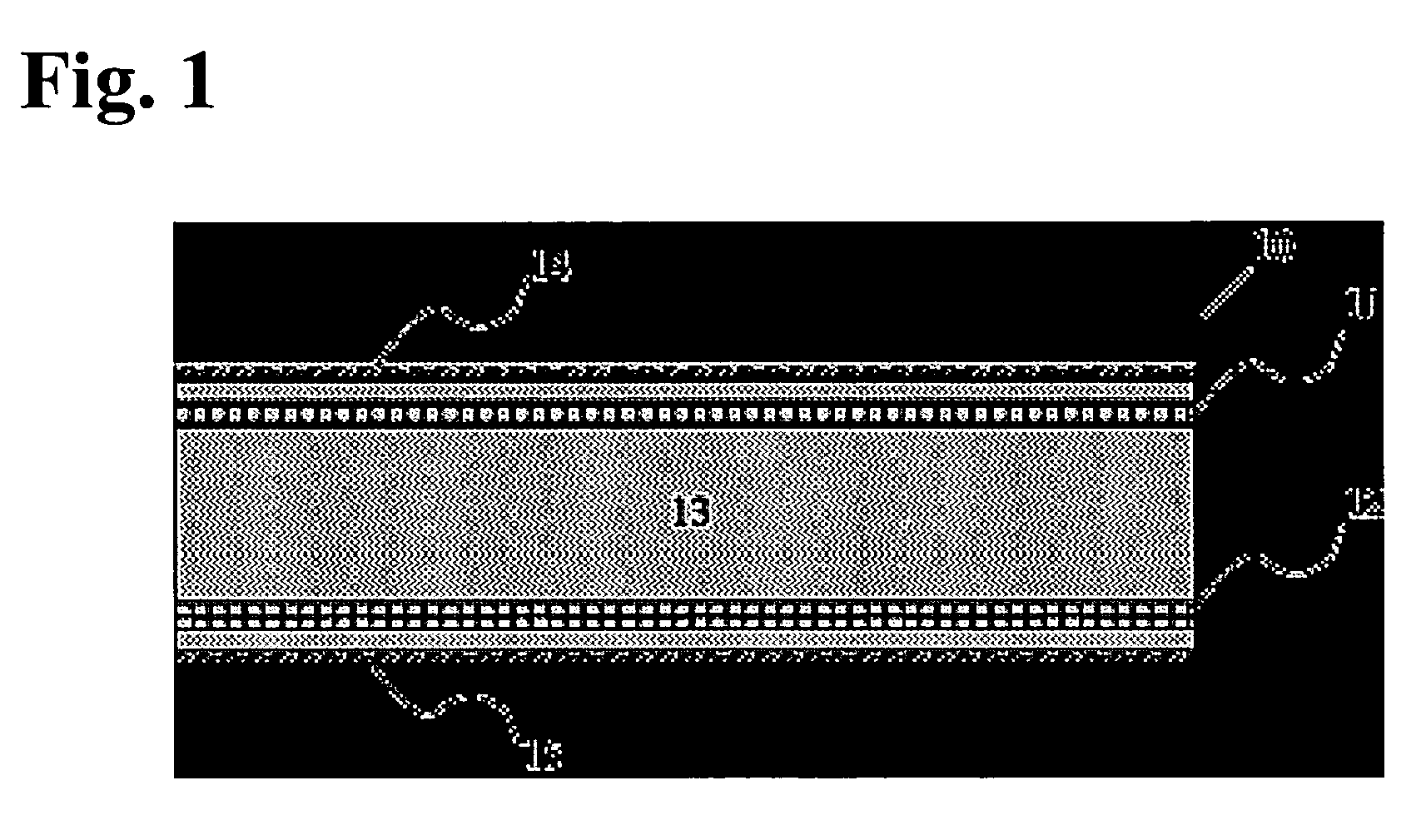Non-woven glass mat with dissolvable binder system for fiber-reinforced gypsum board
a gypsum board and non-woven technology, applied in weaving, surface layering apparatus, manufacturing tools, etc., can solve the problems of not being able to easily paint or wall paper, not being able to easily adhere to the surface of the '569 patent's article, and not being able to easily adhere to the wall, etc., to achieve enhanced strength, flexure resistance and nail pull out resistance. , the effect of strengthening strength
- Summary
- Abstract
- Description
- Claims
- Application Information
AI Technical Summary
Benefits of technology
Problems solved by technology
Method used
Image
Examples
Embodiment Construction
[0034]Gypsum boards incorporate glass fibers to provide fire resistance. When a gypsum board is exposed to temperatures greater than 176° F., the water of hydration in the gypsum matrix is lost and the gypsum matrix crumbles. The presence of glass fibers in the gypsum matrix tends to hold the gypsum matrix together in the event of a fire. The glass fibers found in the prior art are not in any way bonded to the gypsum matrix and do not impart any flexural resistance or strength to gypsum boards.
[0035]If glass fibers are coated with an appropriate sizing, however, a bond can be established between the reinforcing glass fibers and the gypsum matrix as detailed in my co-pending applications pertaining to silane based sizing, U.S. patent application Ser. No. 10 / 796,950 entitled “Silane Based Coatings On Glass Fiber Reinforcements In Gypsum Board,” filed Mar. 10, 2004, and nano or micro particle bonded glass fibers, U.S. patent application Ser. No. 10 / 796,951 entitled “Glass Fibers And Ma...
PUM
| Property | Measurement | Unit |
|---|---|---|
| glass transition temperature | aaaaa | aaaaa |
| glass transition temperature | aaaaa | aaaaa |
| diameter | aaaaa | aaaaa |
Abstract
Description
Claims
Application Information
 Login to View More
Login to View More - R&D
- Intellectual Property
- Life Sciences
- Materials
- Tech Scout
- Unparalleled Data Quality
- Higher Quality Content
- 60% Fewer Hallucinations
Browse by: Latest US Patents, China's latest patents, Technical Efficacy Thesaurus, Application Domain, Technology Topic, Popular Technical Reports.
© 2025 PatSnap. All rights reserved.Legal|Privacy policy|Modern Slavery Act Transparency Statement|Sitemap|About US| Contact US: help@patsnap.com


